The Coca-Cola Company
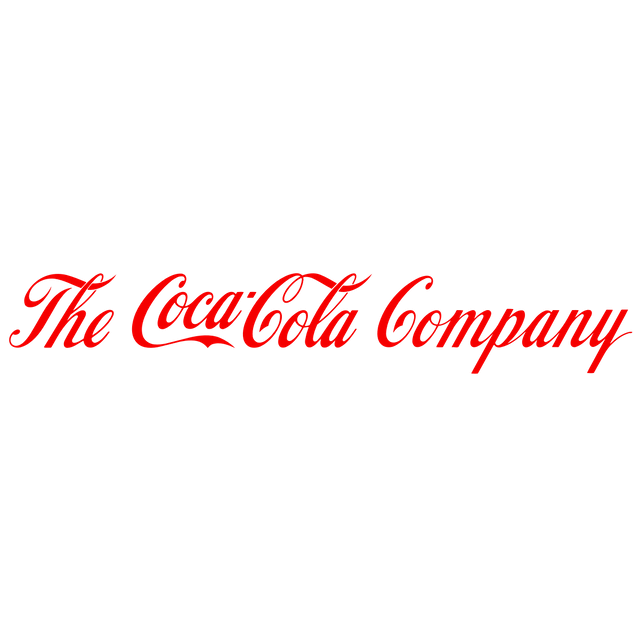
The Coca-Cola Company

 Corporate headquarters in Atlanta, Georgia | |
Type | Public |
|---|---|
| Traded as | |
| Industry | Beverage |
| Founded | January 29, 1892 (1892-01-29) Atlanta, Georgia, U.S. |
| Founders | John Stith Pemberton as Coca-Cola Asa Griggs Candler as The Coca-Cola Company |
| Headquarters | Atlanta, Georgia ,United States |
Area served | Worldwide |
Key people | James Quincey (Chairman and CEO) Brian Smith (President and COO) |
| Products | List of The Coca-Cola Company products |
| Revenue | |
Operating income | |
Net income | |
| Total assets | |
| Total equity | |
Number of employees | 62,600(2018)[1] |
| Subsidiaries | List of The Coca-Cola Company subsidiaries |
| Website | Coca-ColaCompany.com [131] |
The Coca-Cola Company is an American multinational corporation, and manufacturer, retailer, and marketer of nonalcoholic beverage concentrates and syrups.[2] The company is best known for its flagship product Coca-Cola, invented in 1886 by pharmacist John Stith Pemberton in Atlanta, Georgia.[3] The Coca-Cola formula and brand were fully bought with US$2,300 in 1889 by Asa Griggs Candler, who incorporated The Coca-Cola Company in Atlanta in 1892.[4][5][6][7]
The company—headquartered in Atlanta, Georgia, but incorporated in Wilmington, Delaware[8]—has operated a franchised distribution system since 1889: the Company largely produces syrup concentrate, which is then sold to various bottlers throughout the world who hold exclusive territories. The company owns its anchor bottler in North America, Coca-Cola Refreshments. The company's stock is listed on the NYSE and is part of DJIA, the S&P 500 index, the Russell 1000 Index, and the Russell 1000 Growth Stock Index.
 Corporate headquarters in Atlanta, Georgia | |
Type | Public |
|---|---|
| Traded as | |
| Industry | Beverage |
| Founded | January 29, 1892 (1892-01-29) Atlanta, Georgia, U.S. |
| Founders | John Stith Pemberton as Coca-Cola Asa Griggs Candler as The Coca-Cola Company |
| Headquarters | Atlanta, Georgia ,United States |
Area served | Worldwide |
Key people | James Quincey (Chairman and CEO) Brian Smith (President and COO) |
| Products | List of The Coca-Cola Company products |
| Revenue | |
Operating income | |
Net income | |
| Total assets | |
| Total equity | |
Number of employees | 62,600(2018)[1] |
| Subsidiaries | List of The Coca-Cola Company subsidiaries |
| Website | Coca-ColaCompany.com [131] |
History
In 1886, pharmacist John Pemberton from Columbus, Georgia invented the original Coca-Cola drink and sold it as a medicinal beverage.[9] Pemberton's bookkeeper, Frank M. Robinson, is credited with naming the products and creating its logo.[10] Robinson chose the name Coca-Cola because of its two main ingredients (coca leaves and kola nuts) and because it sounded like an alliteration. John Pemberton had taken a break and left Robinson to make and promote, as well as sell Coca-Cola on his own. He promoted the drink with the limited budget that he had and succeeded.[11]
In 1889, American businessman Asa G. Candler completed his purchase of the Coca-Cola formula and brand from Pemberton's heirs.[4][5][7][9] In 1892, the Coca-Cola Company was formally founded in Atlanta by Candler.[4][5][6][7] By 1895, Coca-Cola was being sold in every state in the union.[12] In 1919, the company was sold to Ernest Woodruff's Trust Company of Georgia.[13]
Coca-Cola's first ad read "Coca Cola. Delicious! Refreshing! Exhilarating! Invigorating!"[11] Candler was one of the first businessmen to use merchandising in his advertising strategy.[9] As of 1948, Coca-Cola had claimed about 60% of its market share.[12] By 1984, The Coca-Cola Company's market share decreased to 21.8% due to new competitors, namely Pepsi.[12]
Acquisitions
The company has a long history of acquisitions. Coca-Cola acquired Minute Maid in 1960[14] and in 1982, it acquired the movie studio Columbia Pictures for $692 million but Columbia was sold to Sony for $3 billion in 1989.[15] It acquired the Indian cola brand Thums Up in 1993,[16] and Barq's in 1995.[17] In 2001, it acquired the Odwalla brand of fruit juices, smoothies, and bars for $181 million.[18][19] In 2007, it acquired Fuze Beverage from founder Lance Collins and Castanea Partners for an estimated $250 million.[20][21]
In 2011, it acquired the remaining stake in Honest Tea, having bought a 40% stake in 2008 for $43m.[24] In 2013, it finalized its purchase of ZICO, a coconut water company.[25][26][27] In August 2014, it acquired a 16.7% (currently 18.5% due to stock buy backs) stake in Monster Beverage for $2.15 billion with an option to increase it to 25%, as part of a long-term strategic partnership that includes marketing and distribution alliance, and product line swap.[28] In 2015, the company took a minority stake ownership in the cold pressed juice manufacturer, Suja Life LLC.[29][30] In December 2016, it bought many of the former SABMiller's Coca-Cola operations.[31] The Coca-Cola Company owns a 68.3% stake in Coca-Cola Bottlers Africa. Coca-Cola Bottlers Africa's headquarters located in Port Elizabeth South Africa.
In 2017, The Coca-Cola Company acquired Mexican sparking water brand Topo Chico.[32]
On August 31, 2018, it agreed to acquire Costa Coffee from Whitbread for £3.9bn. The acquisition closed on 3 January 2019.[33]
The Coca-Cola Company acquired a 40% stake in Chi Ltd on January 30, 2016. The Coca-Cola Company acquired the remaining 60% stake in Chi Ltd on January 30, 2019.
During August 2018 The Coca-Cola Company acquired Moxie for an undisclosed amount.[34]
On September 19, 2018 The Coca-Cola Company acquired Organic & Raw Trading Co. Pty Ltd the manufacturer of MOJO Kombucha in Willunga, Australia.
On August 14, 2018 The Coca-Cola Company announced a minority interest in Body Armor.
On October 5, 2018 The Coca-Cola Company acquired a 22.5% stake in MADE Group from Luke Marget, Matt Dennis and Brad Wilson the company's 3 founders. The Coca-Cola Company owns a 30.8% stake in Coca-Cola Amatil ltd, therefore The Coca-Cola Company owns a further 6.93% stake in MADE Group through its ownership stake in Coca-Cola Amatil ltd.
Revenue and sales
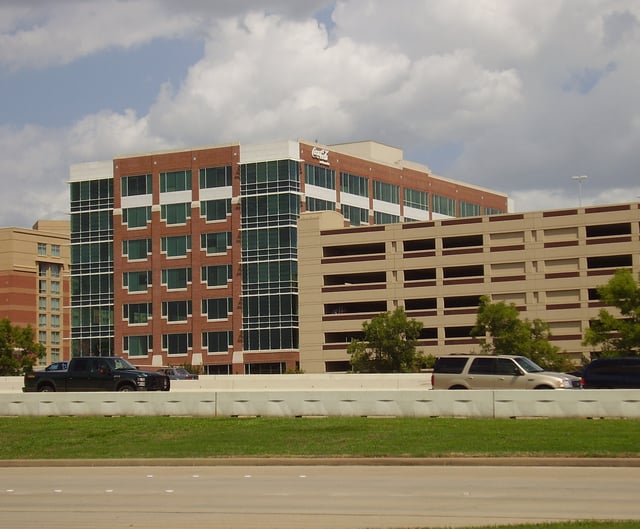
The Coca-Cola Company's Minute Maid group North America offices in Sugar Land Town Square, Sugar Land, Texas, United States
According to The Coca-Cola Company's 2005 Annual Report, the firm at that time sold beverage products in more than 200 countries.[35] The 2005 report further states that of the more than 50 billion beverage servings of all types consumed worldwide, daily, beverages bearing the trademarks owned by or licensed to Coca-Cola account for approximately 1.5 billion. Of these, beverages bearing the trademark "Coca-Cola" or "Coke" accounted for approximately 78% of the company's total gallon sales.[35]
In 2010, it was announced that Coca-Cola had become the first brand to top £1 billion in annual UK grocery sales.[36] In 2017, Coke sales were down 11% from a year earlier due to consumer tastes shifting away from sugary drinks and health risks associated with artificial sweeteners in diet drinks.[37]
| Year | Revenue in mil. USD$ | Net income in mil. USD$ | Price per Share in USD$ | Employees |
|---|---|---|---|---|
| 2000[38] | 17,354 | 2,177 | 17.11 | |
| 2001[38] | 17,545 | 3,969 | 15.24 | |
| 2002[38] | 19,394 | 3,050 | 15.82 | |
| 2003[38] | 20,857 | 4,347 | 14.28 | |
| 2004[39] | 21,742 | 4,847 | 15.34 | |
| 2005[40] | 23,104 | 4,872 | 14.47 | |
| 2006[41] | 24,088 | 5,080 | 15.26 | |
| 2007[42] | 28,857 | 5,981 | 19.24 | 90,500 |
| 2008[43] | 31,944 | 5,807 | 19.71 | 92,400 |
| 2009[44] | 30,990 | 6,824 | 18.49 | 92,800 |
| 2010[45] | 35,119 | 11,787 | 22.12 | 139,600 |
| 2011[46] | 46,542 | 8,584 | 26.84 | 146,200 |
| 2012[47] | 48,017 | 9,019 | 30.70 | 150,900 |
| 2013[48] | 46,854 | 8,584 | 33.78 | 130,600 |
| 2014[49] | 45,998 | 7,098 | 35.82 | 129,200 |
| 2015[50] | 44,294 | 7,351 | 37.29 | 123,200 |
| 2016[51] | 41,863 | 6,527 | 40.63 | 100,300 |
| 2017[52] | 35,410 | 1,248 | 42.80 | 61,800 |
Stock
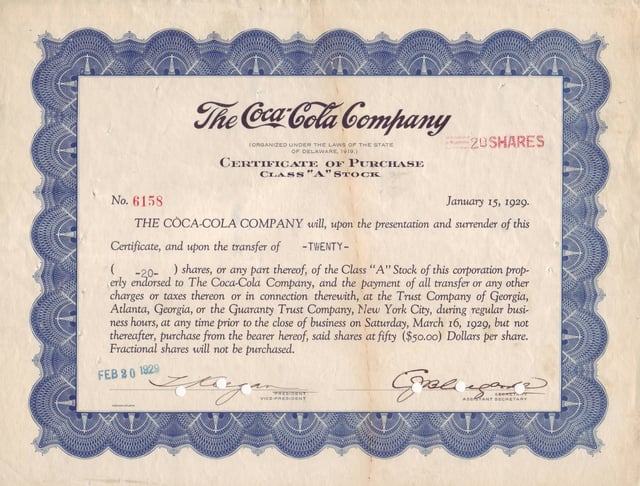
Certificate of Purchase Class A Stock for 20 Shares of The Coca-Cola Company, issued 20. February 1929
Since 1919, Coca-Cola has been a publicly traded company.[53] Its stock is listed on the New York Stock Exchange under the ticker symbol "KO".[54] One share of stock purchased in 1919 for $40, with all dividends reinvested, would have been worth $9.8 million in 2012, a 10.7% annual increase adjusted for inflation.[55] A predecessor bank of SunTrust received $100,000 for underwriting Coca-Cola's 1919 public offering; the bank sold that stock for over $2 billion in 2012.[56] In 1987, Coca-Cola once again became one of the 30 stocks which makes up the Dow Jones Industrial Average, which is commonly referenced as a proxy for stock market performance; it had previously been a Dow stock from 1932 to 1935.[57] Coca-Cola has paid a dividend since 1920 and (as of 2019) has increased it each year since 1963.[58][59][60][61] Stock is available from a direct purchase program, through Computershare Trust Company, but unlike many programs, has investment fees.[62]
Staff and management
The following are key management as of May 2017 (excluding VP positions and regional leaders):[63]
James Quincey (chairman and chief executive officer)
Brian Smith (president and chief operating officer)
Marcos de Quinto (chief marketing officer)
J. Alexander M. Douglas, Jr. (President, Coca‑Cola North America)
Ceree Eberly (Chief People Officer)
Irial Finan (President, Bottling Investments Group)
Bernhard Goepelt (General Counsel and Chief Legal Counsel)
Julie Hamilton (Chief Customer and Commercial Leadership Officer)
Brent Hastie (Senior Vice President, Strategy and Planning)
Nancy Quan (Chief Technical Officer)
Barry Simpson (chief information officer)
Clyde C. Tuggle (Chief Public Affairs and Communications Officer)
Kathy N. Waller (chief financial officer)
Craig Williams (President, The McDonald's Division)
The following are all directors as of November 2016:[63]
Muhtar Kent (Chairman)
Herbert A. Allen Jr.
Ronald W. Allen
Marc Bolland
Ana Botín
Howard G. Buffett
Richard M. Daley
Barry Diller
Helene D. Gayle
Alexis M. Herman
Bobby Kotick
Maria Elena Lagomasino
Sam Nunn
David B. Weinberg
Bottlers

Coca-Cola
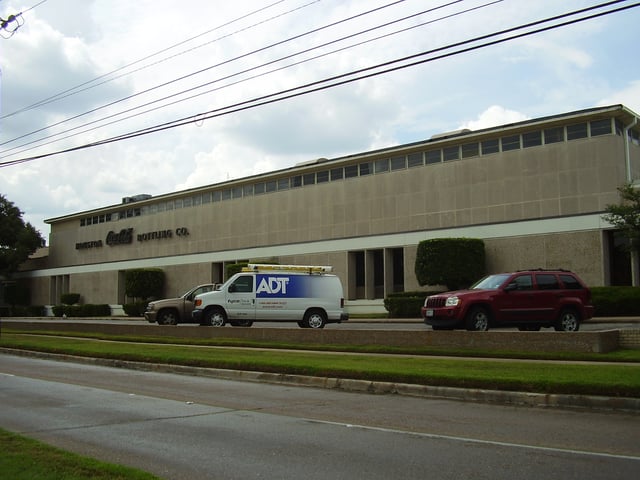
Houston Coca-Cola Bottling Company
In general, The Coca-Cola Company and its subsidiaries only produce syrup concentrate, which is then sold to various bottlers throughout the world who hold a local Coca-Cola franchise. Coca-Cola bottlers, who hold territorially exclusive contracts with the company, produce the finished product in cans and bottles from the concentrate, in combination with filtered water and sweeteners. The bottlers then sell, distribute, and merchandise the resulting Coca-Cola product to retail stores, vending machines, restaurants, and food service distributors. Outside the United States, these bottlers also control the fountain business.
Since the early 1980s, the company has actively encouraged the consolidation of bottlers, with the company often owning a share of these "anchor bottlers".[64]
- Outside North America
The company's largest bottlers outside North America are:[65]
Coca-Cola Amatil, based in Australia (Australia, New Zealand, Indonesia, South Pacific nations) (Company owns 30.8%)
Coca-Cola European Partners PLC, based in the United Kingdom (western Europe) (Company owns 18.1%)
International Beverages Pvt. Ltd., based in Bangladesh (Fully owned subsidiary of The Coca-Cola Company)[66]
Coca-Cola Bottling Shqipëria, based in Albania
Coca-Cola Bottlers Philippines, Inc., based in the Philippines (Fully owned subsidiary of The Coca-Cola Company)
Coca-Cola FEMSA, based in Mexico (parts of Mexico and Latin America) (Company owns 27.8%)
Arca Continental, also based in Mexico (parts of Mexico and Latin America and in US under Coca-Cola Southwest Beverages LLC in the state of Texas and parts of New Mexico, Oklahoma and Arkansas ) (independent)
Embotelladora Andina S.A, based in Chile (southern South America) (Company owns 14.7% of series A common stock outstanding & 14.7% of series B common stock outstanding)
Coca-Cola Beverages Africa, based in Port Elizabeth, South Africa (southern and eastern Africa) (company owns 68.3%)
Coca-Cola Korea, based in South Korea (independent)
Coca-Cola HBC AG, originally based in Greece but now located in Switzerland (Greece, Ireland, Eastern Europe, Russia, and Nigeria) (Company owns 23.2%)
Coca-Cola Icecek Based in Turkey (Turkey, South West Asia, Arabia) (Company owns 20.1%)
Swire Group, based in Hong Kong (China, Taiwan, Hong Kong) (independent)
Kirin Company, based in Japan (independent)
Coca-Cola Japan Holdings (Company owns 16.3%)
PT Coca-Cola Bottling Indonesia (Company owns 29.4%) (Coca-Cola Amatil ltd owns 70.6%)
- In the United States
In the United States, the company bypasses bottlers and is responsible for the manufacture and sale of fountain syrups directly to authorized fountain wholesalers and some fountain retailers.[67]
After purchasing the North American assets of Coca-Cola Enterprises, as of 2014 the company directly owns 100% of Coca-Cola Refreshments, the anchor bottler of Coca-Cola products in North America, representing about 90% of Canada and 80% of the United States.
Other major bottlers in the United States are:
Coca-Cola Bottling Co. Consolidated, based in Charlotte, North Carolina (company owns 34.8%)
Coca-Cola Bottling Company of Northern New England based in Bedford, New Hampshire and owned by Kirin Company
Coca-Cola Bottling Company United, based in Birmingham, Alabama (independent)
Swire Coca-Cola USA, based in Salt Lake City, Utah and owned by Swire Group
In September 2015, the company announced the sale of several production plants and territories to Swire, Consolidated, and United, and creation of the Coca-Cola National Product Supply System which controls 95% of the territory in the United States.[68]
Consumer relations and civic involvement
After Martin Luther King, Jr. won the 1964 Nobel Peace Prize, plans for an interracial celebratory dinner in still-segregated Atlanta were not initially well supported by the city's business elite until Coca-Cola intervened.[69]
J. Paul Austin, the chairman and CEO of Coca-Cola, and Mayor Ivan Allen summoned key Atlanta business leaders to the Commerce Club's eighteenth floor dining room, where Austin told them flatly, 'It is embarrassing for Coca-Cola to be located in a city that refuses to honor its Nobel Prize winner. We are an international business. The Coca-Cola Company does not need Atlanta. You all need to decide whether Atlanta needs the Coca-Cola Company.' Within two hours of the end of that meeting, every ticket to the dinner was sold.— Andrew Young[70]
Throughout 2012, Coca-Cola contributed $1,700,500 to a $46 million political campaign known as "The Coalition Against The Costly Food Labeling Proposition, sponsored by Farmers and Food Producers".[71] This organization was set up to oppose a citizen's initiative, known as Proposition 37, demanding mandatory labeling of foods containing genetically modified ingredients.[72]
In 2012, Coca-Cola was listed as a partner of the (RED) campaign, together with other brands such as Nike, Girl, American Express, and Converse. The campaign's mission is to prevent the transmission of the HIV virus from mother to child by 2015 (the campaign's byline is "Fighting for an AIDS Free Generation").[73]
Criticism
Since the early 2000s, the criticisms over the use of Coca-Cola products as well as the company itself, escalated with concerns over health effects, environmental issues, animal testing, economic business practices and employee issues. The Coca-Cola Company has been faced with multiple lawsuits concerning these various criticisms.
Advertising
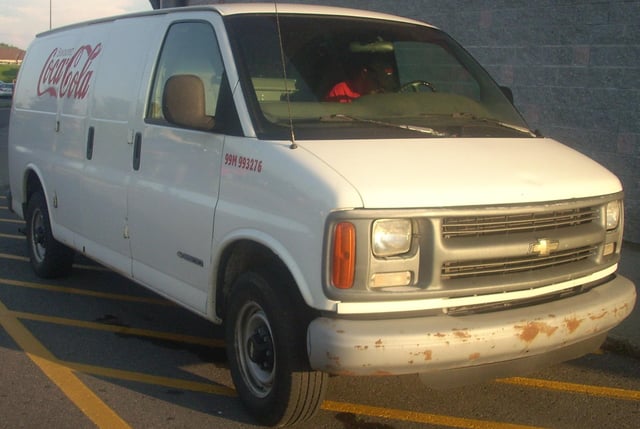
A Chevrolet Express van bearing the logo of The Coca-Cola Company.
Coca-Cola advertising has "been among the most prolific in marketing history", with a notable and major impact on popular culture and society as a whole.
The logo, bottle design, and brand image are internationally recognizable. Their product is ranked the number one soft drink, repeatedly, internationally, and has notoriety as the first soft drink consumed by astronauts in space. Coca-Cola employs a diverse range of integrated marketing communications to advertise through direct marketing, web based media, social media, and sales promotions (Stringer, 2015).[74]
The company carefully considers all touch points a consumer (or prospective consumer) has with the brand as potential delivery channels for the brand's message, and makes use of all relevant communication systems. This well established, long-standing, consistent approach has created a longing for the product that by far "superseded the desire for that typically associated with a drink to quench one's thirst" (Dudovskiy, 2015).[75]
- Direct marketing
They have exclusive vendor company partnerships, which eliminates competition, e.g. cinemas and restaurants only serving Coca-Cola over Pepsi. At sponsored sporting events, they again eliminate competition by attaining sole sale rights as well as VIP sales opportunities to important clients, for example, baseball fields.
- Viral marketing
The company also markets via mobile marketing in text messages, e.g. viral marketing campaigns (Stringer, 2015).[74]
- Web and social media
They set the industry benchmark as the brand so universally recognized that audience building is unnecessary. Their fan engagement spans 86 million globally across social media channels. They deliver a consistently unified message whether it be through new products, online interaction, and social, cultural, or sporting events (Stringer, 2015).[74]
- Sales and promotions
In the retail setting, direct store beverage delivery trucks (mobile advertising) as well as point of sale coolers and vending machines have bright red logo blazoned branding. In terms of food service, Coca-Cola is a food pairing suggestion that is now ingrained as a food match, e.g., for popcorn, burgers, fries, and hot dog combos (Stringer, 2015).[74]
Products and brands
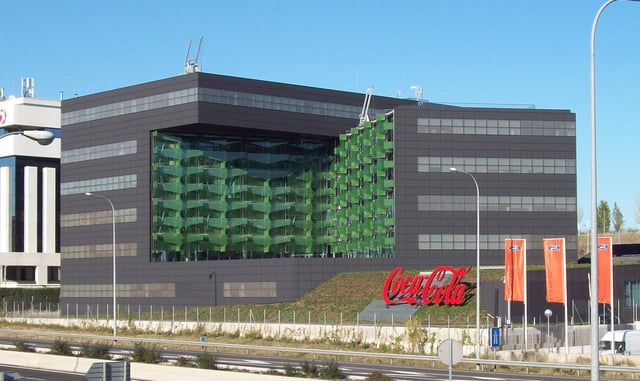
Coca-Cola Company's office building in Madrid (Spain)
The Coca-Cola Company offers more than 350 brands in over 200 countries, aside from its namesake Coca-Cola beverage.
Non-food assets
Columbia Pictures (no longer owned)
Coca-Cola bought Columbia Pictures in 1982, owing to the low monetary value of the studio. The film company was the first and only studio ever owned by Coca-Cola. During its ownership of the studio, the studio released many popular films including Ghostbusters, Stripes, The Karate Kid, and some others. However, two years after the critical and commercial failure of the 1987 film Ishtar, Columbia was sold to Tokyo-based Sony in 1989.[15]
World of Coca-Cola
Brands
Other soft drinks
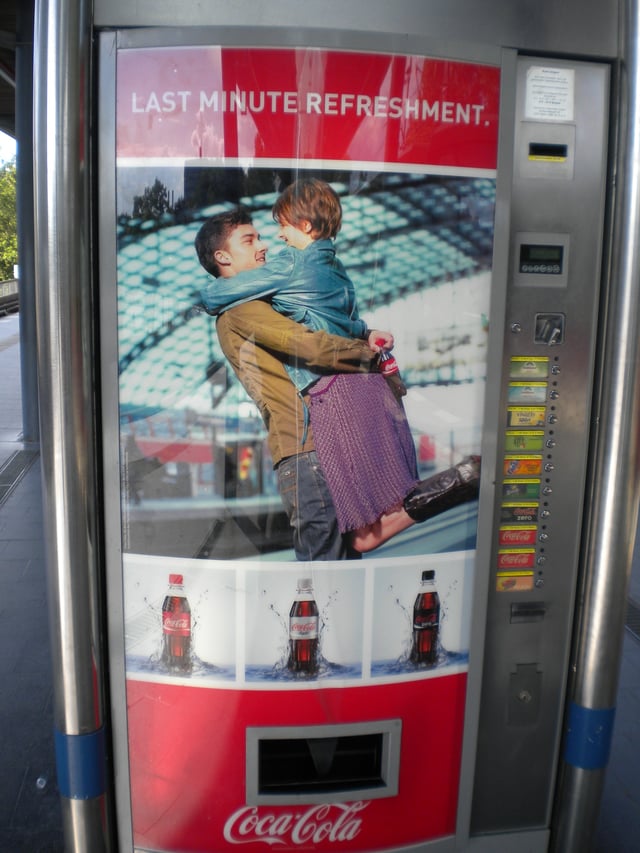
An ad in Berlin, Germany.
The Coca-Cola Company also produces a number of other soft drinks including Fanta (introduced circa 1941) and Sprite. Fanta's origins date back to World War II during a trade embargo against Germany on cola syrup, making it impossible to sell Coca-Cola in Germany. Max Keith, the head of Coca-Cola's German office during the war, decided to create a new product for the German market, made from products only available in Germany at the time, which they named Fanta.[78] The drink proved to be a hit, and when Coke took over again after the war, it adopted the Fanta brand as well. Fanta was originally an orange flavored soft drink which can come in plastic bottles or cans. It has become available in many different flavors now such as grape, peach, grapefruit, apple, pineapple, and strawberry.
In 1961, Coca-Cola introduced Sprite, a lemon-lime soft drink, and another of the company's bestsellers and its response to 7 Up.
Tab was Coca-Cola's first attempt to develop a diet soft drink, using saccharin as a sugar substitute. Introduced in 1963, the product is still sold today, although its sales have dwindled since the introduction of Diet Coke.[79]
Coca-Cola South Africa also released Valpre Bottled "still" and "sparkling" water.
In 1969, the company released Simba, which was a take on Mountain Dew, and had packaging that was African desert themed, replete with an African Lion as the symbol of the brand. The tagline was "Simba – It Cures the African Thirst."
Also in 1969, the company released a line of products under the name of Santiba, which was targeted for mixing cocktails and party usage, products including Quinine water and Ginger Ale. Like the above-mentioned Simba, the Santiba line of products was short lived in the marketplace.
BreakMate
No longer manufactured, the Coca-Cola BreakMate was a three-flavor dispenser introduced by Coca-Cola and Siemens in 1988. Intended for use in offices with five to fifty people,[80] its refrigerated compartment held three individual one-litre plastic containers of soda syrup and a CO2 tank. Like a soda fountain, it mixed syrup in a 1:5 ratio with carbonated water. In North America, Coca-Cola discontinued spare BreakMate parts in 2007 and stopped distributing the syrup in 2010.[81]
Healthy beverages
During the 1990s, the company responded to the growing consumer interest in healthy beverages by introducing several new non-carbonated beverage brands. These included Minute Maid Juices to Go, Powerade sports beverage, flavored tea Nestea (in a joint venture with Nestlé), Fruitopia fruit drink, and Dasani water, among others. In 2001, the Minute Maid division launched the Simply Orange brand of juices including orange juice. In 2016, Coca-Cola India introduced Vio to enter into the value-added dairy category. The product lays the foundation for Coca-Cola's new segment after carbonated beverages, water and juices.[82]
In 2004, perhaps in response to the burgeoning popularity of low-carbohydrate diets such as the Atkins diet, Coca-Cola announced its intention to develop and sell a low-carbohydrate alternative to Coke Classic, dubbed C2 Cola. C2 contains a mix of high fructose corn syrup, aspartame, sucralose, and Acesulfame potassium. C2 is designed to more closely emulate the taste of Coca-Cola Classic. Even with less than half of the food energy and carbohydrates of standard soft drinks, C2 is not a replacement for zero-calorie soft drinks such as Diet Coke. C2 went on sale in the U.S. on June 11, 2004, and in Canada in August 2004. C2's future is uncertain due to disappointing sales.
Starting in 2009, The Coca-Cola Company invested in Innocent Drinks, first with a minor stake, increasing to 90% in the first quarter of 2013.[83]
It was in May 2014 when Finley, a sparkling fruit-flavored drink, was launched in France. It was launched in other countries later,[84] including Belgium and Luxembourg in September 2014. Coca-Cola first started developing the drink in Belgium in 2001.[85] As of 2014, the drink is targeted for adults, and is low in sugar with four flavors.[84]
Best selling
Coca-Cola is the best-selling soft drink in most countries, and was recognized as the number one global brand in 2010.[86] While the Middle East is one of the only regions in the world where Coca-Cola is not the number one soda drink, Coca-Cola nonetheless holds almost 25% market share (to Pepsi's 75%) and had double-digit growth in 2003.[87] Similarly, in Scotland, where the locally produced Irn-Bru was once more popular, 2005 figures show that both Coca-Cola and Diet Coke now outsell Irn-Bru.[88] In Peru, the native Inca Kola has been more popular than Coca-Cola, which prompted Coca-Cola to enter in negotiations with the soft drink's company and buy 50% of its stakes. In Japan, the best selling soft drink is not cola, as (canned) tea and coffee are more popular.[89] As such, The Coca-Cola Company's best selling brand there is not Coca-Cola, but Georgia.[90] In May 2016, The Coca-Cola Company temporarily halted production of its signature drink in Venezuela due to sugar shortages.[91] Since then, The Coca-Cola Company has been using "minimum inventories of raw material" to make their signature drinks at two production plants in Venezuela.[92]
Information
On July 6, 2006, a Coca-Cola employee and two other people were arrested and charged with trying to sell trade secret information to the soft drink maker's competitor PepsiCo for $1.5 million. The recipe for Coca-Cola, perhaps the company's most closely guarded secret, was never in jeopardy; instead, the information was related to a new beverage in development. Coca-Cola executives verified that the trade secret documents in question were genuine and proprietary to the company. At least one glass vial containing a sample of a new drink was offered for sale, court documents said. The conspiracy was revealed by PepsiCo, which notified authorities when it was approached by the conspirators.[93]
Green tea
The company announced a new "negative calorie" green tea drink, Enviga, in 2006, along with trying coffee retail concepts Far Coast and Chaqwa.
Glaceau
On May 25, 2007, Coca-Cola announced it would purchase Glaceau, a maker of flavored vitamin-enhanced drinks (vitamin water), flavored waters, and Burn energy drinks, for $4.1 billion in cash.[94]
Huiyuan Juice
On September 3, 2008, Coca-Cola announced its intention to make cash offers to purchase China Huiyuan Juice Group Limited (which had a 42% share of the Chinese pure fruit juice market[95]) for US$2.4bn (HK$12.20 per share).[96] China's ministry of commerce blocked the deal on March 18, 2009, arguing that the deal would hurt small local juice companies, could have pushed up juice market prices, and limited consumers' choices.[97]
Coke Mini can
Holiday can
In November 2011, Coca-Cola revealed a seasonal design for their regular Coke cans as part of a partnership with the World Wildlife Fund. However it was withdrawn only a month after release due to consumer complaints about the similar look to the silver cans commonly used for Diet Coke. There were also complaints about deviating from traditional red as the color of Coca-Cola cans previously.[100]
Stake in Monster Beverage
It was announced on August 14, 2014, that Coca-Cola Co is making a cash payment of $2.15 billion for a 16.7 percent stake in Monster Beverage Corp to expand its market for energy drinks. Coke's ownership in Full Throttle and Burn will be transferred to Monster. In return, Monster will transfer its ownership in Hansen's Natural Sodas and Peace Iced Tea and Blue Sky Soda to The Coca-Cola Company. Muhtar Kent, Coke's former chief executive officer, stated that the company has the option to increase its stake to 25 percent but cannot exceed that percentage in the next four years.[101][102] Due to share buy backs by the board of directors of Monster Beverage Corporation, The Coca-Cola Company's stake has since increased to 18.5%.
Sponsorship
Coca-Cola's advertising expenses accounted for US$3.256 billion in 2011.[103]
Sports
Coca-Cola sponsored the English Football League from the beginning of the 2004–05 season (beginning August 2004) to the start of 2010/11 season, when the Football League replaced it with NPower. Along with this, Coca-Cola sponsored the Coca-Cola Football Camp, that took place in Pretoria, South Africa during the 2010 FIFA World Cup, during which hundreds of teenagers from around the world were able to come together and share their love of the game, partly due to Best Buy's efforts through their @15 program.[104]
Other major sponsorships include the AFL, NHRA, NASCAR, the PGA Tour, NCAA Championships, the Olympic Games, the NRL, the FIFA World Cups and the UEFA European Championships. The company partnered with Panini to produce the first virtual sticker album for the 2006 FIFA World Cup, and they have collaborated for every World Cup since.[105] Each fall, Coca-Cola is the sponsor of the TOUR Championship by Coca-Cola held at the East Lake Golf Club in Atlanta, Georgia. The Tour Championship is the season ending tournament of the PGA Tour. In the Philippines, it has a team in the Philippine Basketball Association, the Powerade Tigers.
Television
The company sponsored the popular Fox singing-competition series American Idol from 2002 until 2014.[107]
Coca-Cola was a sponsor of the nightly talk show on PBS, Charlie Rose in the US.[108]
Coca-Cola are also executive producers of Coke Studio (Pakistan). There are various adaptations of Coke Studio such as Coke Studio (India) and Coke Studio (Middle East).
Theme parks
While not necessarily having naming rights to anything in all locations, the company does sponsor and provide beverages in many theme parks, usually in an exclusive capacity. This includes the Walt Disney Parks and Resorts,[117] Merlin Entertainment, Universal Parks & Resorts, Six Flags, Cedar Fair, and SeaWorld Entertainment which are six of the nine largest theme park operators worldwide (it is unknown whether OCT Parks China, the Chimelong Group, or Fantawild, the fourth, seventh, and eighth largest theme park operators respectively, use Coca-Cola).[111]
See also
List of assets owned by The Coca-Cola Company
Stepan Company – produces coca leaf extract